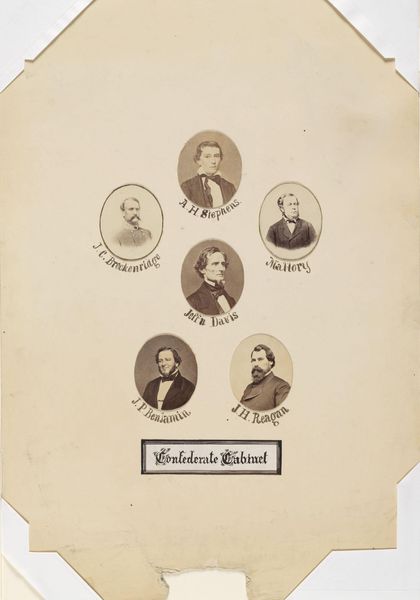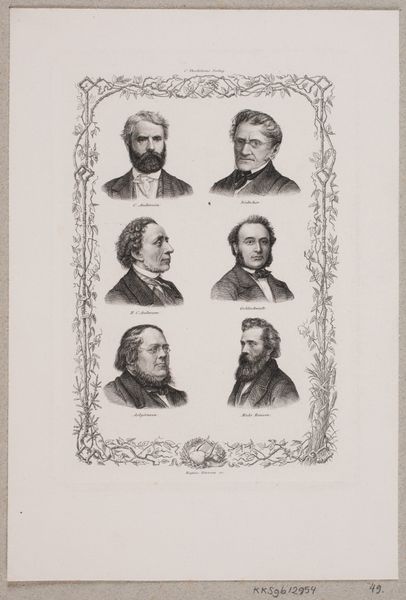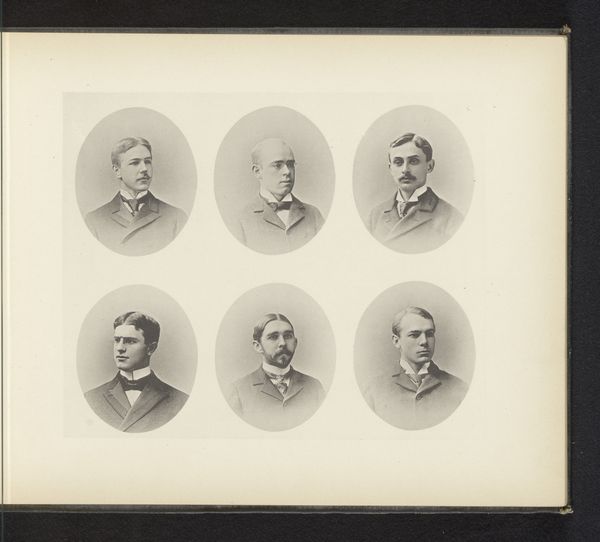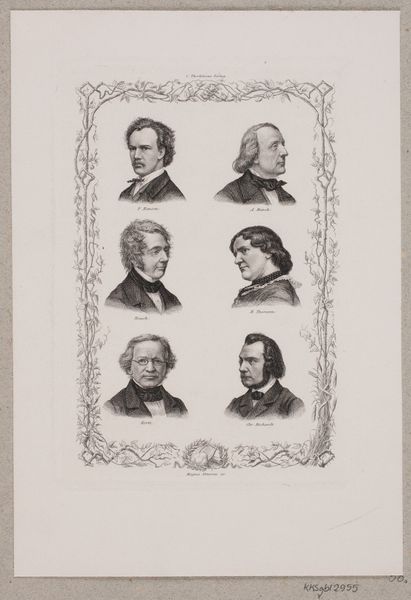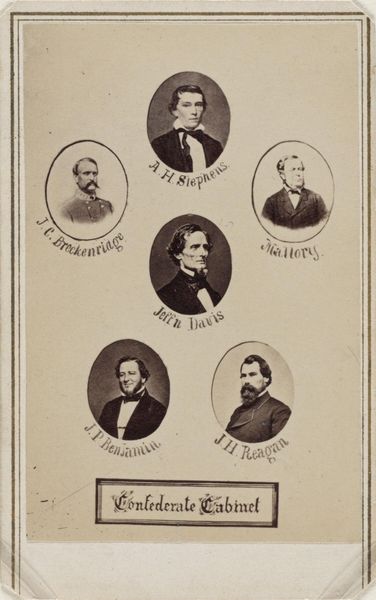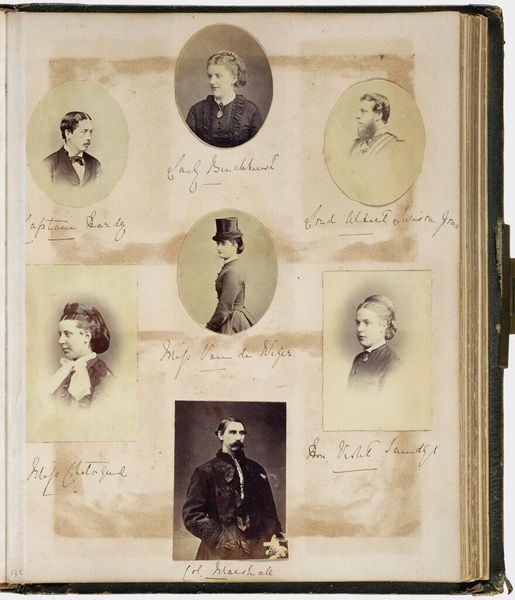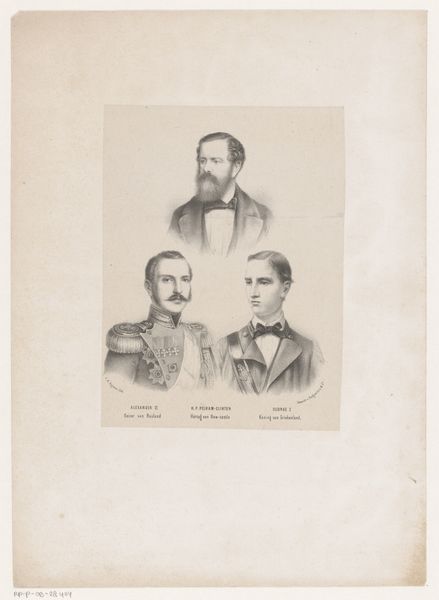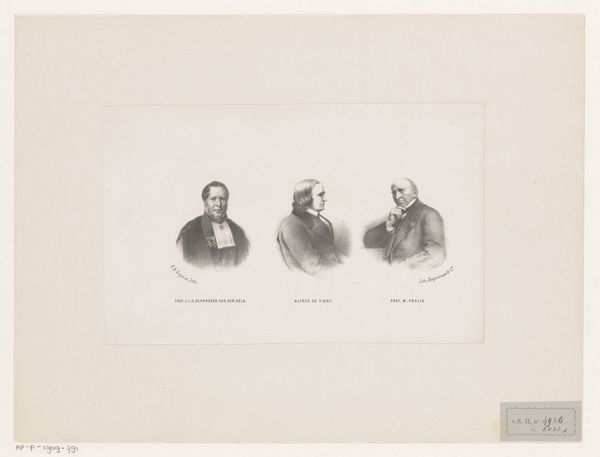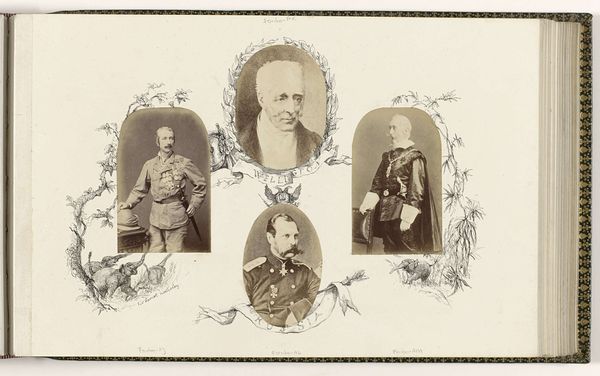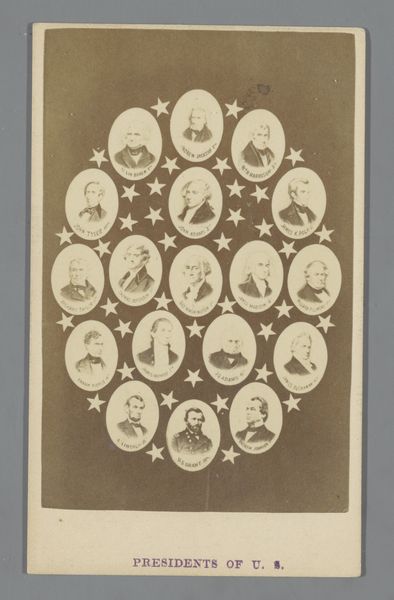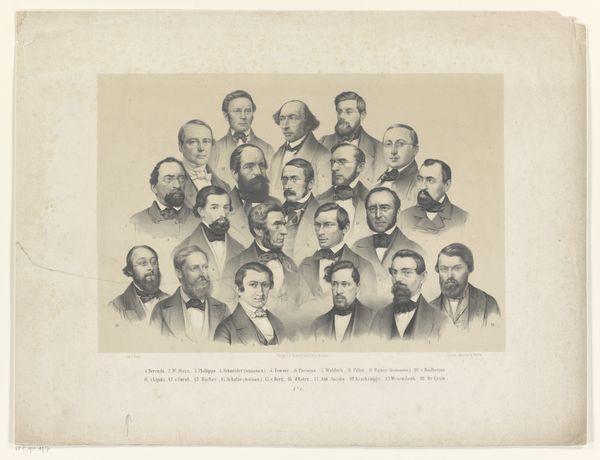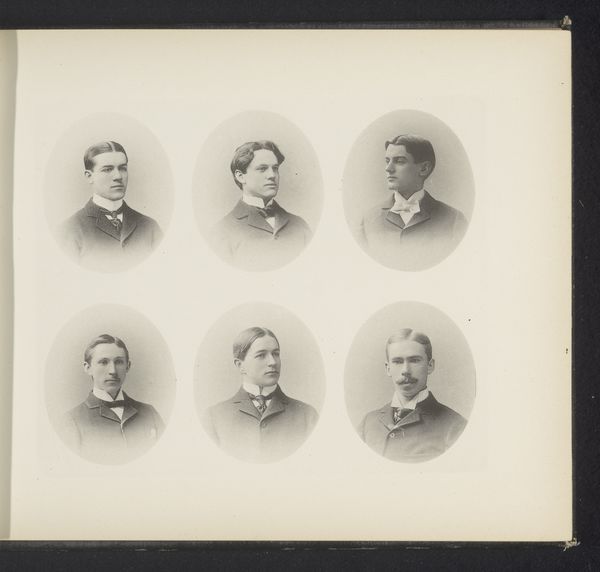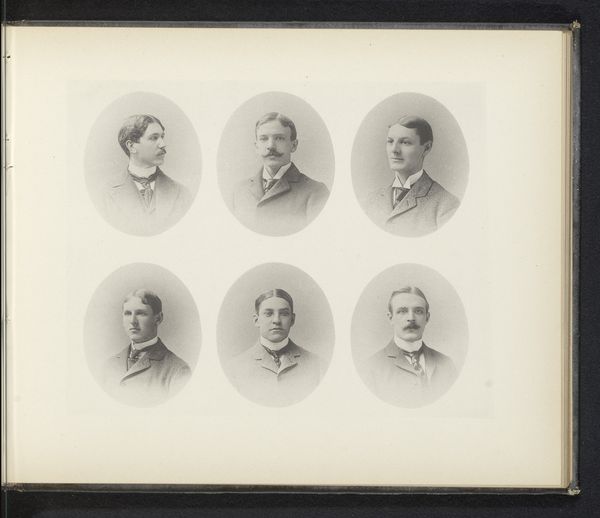
Vier portretten van Groningse hoogleraren geneeskunde, op één vel gemonteerd: Jacob Baart de la Faille (1795-1867), François Zacharias Ermerins (1808-1871), Izaäk van Deen (1805-1869) en Jan Hissink Jansen (1816-1885) 1864 - 1867
0:00
0:00
#
photo of handprinted image
#
light coloured
#
white palette
#
curved letter used
#
stoneware
#
ceramic
#
watercolour bleed
#
watercolour illustration
#
positive shape
#
watercolor
Dimensions: height 77 mm, width 55 mm, height 77 mm, width 55 mm, height 77 mm, width 56 mm, height 77 mm, width 55 mm
Copyright: Rijks Museum: Open Domain
Curator: Looking at this composition, I'm struck by how...orderly it feels, almost clinical in its arrangement. Four portraits, neatly organized on what appears to be a single sheet. Editor: Indeed. We're looking at a photographic print from somewhere between 1864 and 1867. It presents "Vier portretten van Groningse hoogleraren geneeskunde," or Four Portraits of Groningen Medical Professors. The subjects are Jacob Baart de la Faille, François Zacharias Ermerins, Izaäk van Deen, and Jan Hissink Jansen, all significant figures in the medical faculty. Curator: The gaze of these men, each framed in an oval vignette, exudes authority. There's a certain... male academic energy here. I immediately consider the structures that support such authority – the universities themselves and the power dynamics inherent within the field of medicine in the 19th century. How exclusive these spaces would have been at that time. Editor: Precisely. Johannes Hinderikus Egenberger, the photographer, likely aimed to project the Faculty’s established authority. These aren’t simply portraits; they are statements of institutional power visualized at a particular moment in Dutch academic history. Their arrangement evokes a desire for order and control. Curator: Absolutely. But there's a tension for me, thinking about representation then and now. How did these men contribute to, or perhaps even challenge, medical norms? And what voices were consistently absent? Knowing the role universities have historically played in reinforcing societal hierarchies, I’m compelled to ask, who wasn't in the frame? Editor: A critical question, indeed. One layer to unpack would be how imagery like this bolstered institutional reputations, especially considering evolving notions of scientific legitimacy in the mid-19th century. The print isn’t just documentation; it’s actively participating in constructing the identity of the Faculty. Curator: So, beyond the immediate impression, we are invited to interrogate the narrative that this piece subtly communicates. Who has the right to be seen, who holds power, and how these power structures are visually perpetuated. Editor: Exactly. Looking closer, one might examine the materiality of the print, its texture, and the quality of the photographic reproduction as it connects to evolving print culture. Curator: That really brings it home— this visual artifact serves not just as a reminder of the past, but as a tool for questioning our present. Editor: And ultimately pushes us to examine the narratives and representations presented to us.
Comments
No comments
Be the first to comment and join the conversation on the ultimate creative platform.
